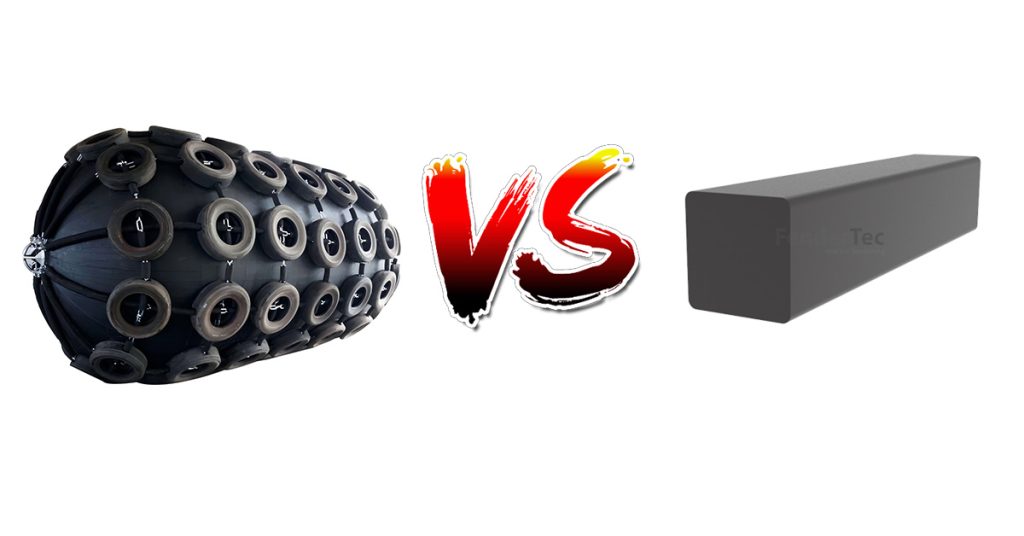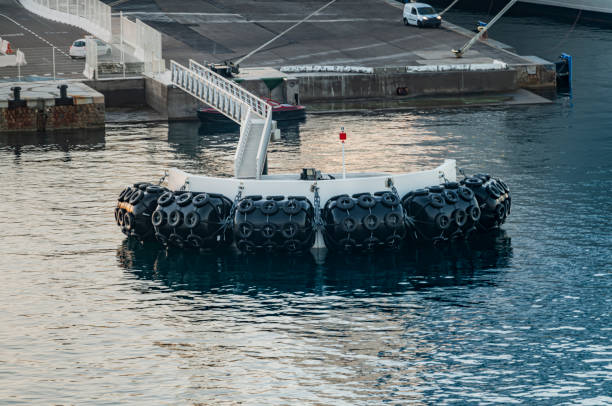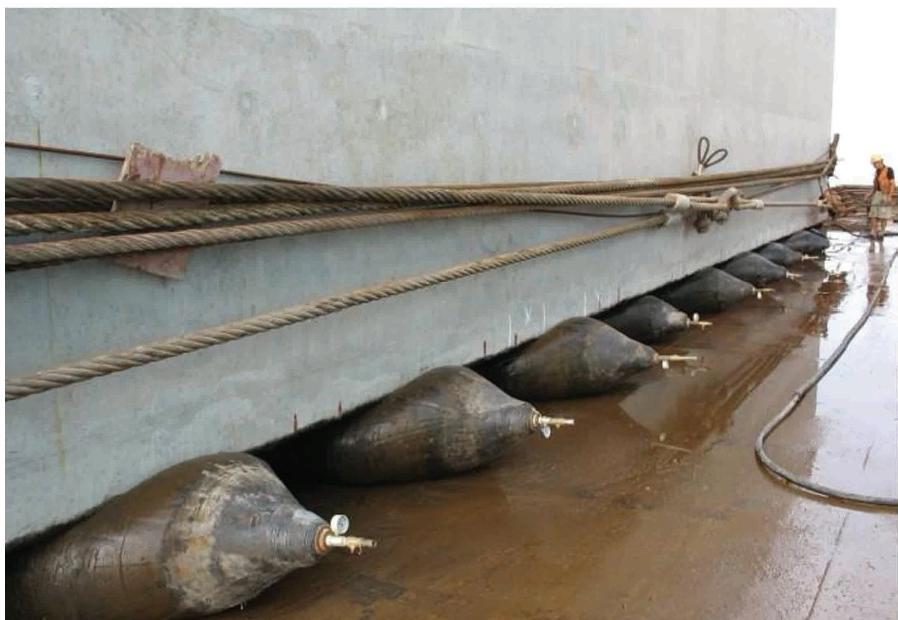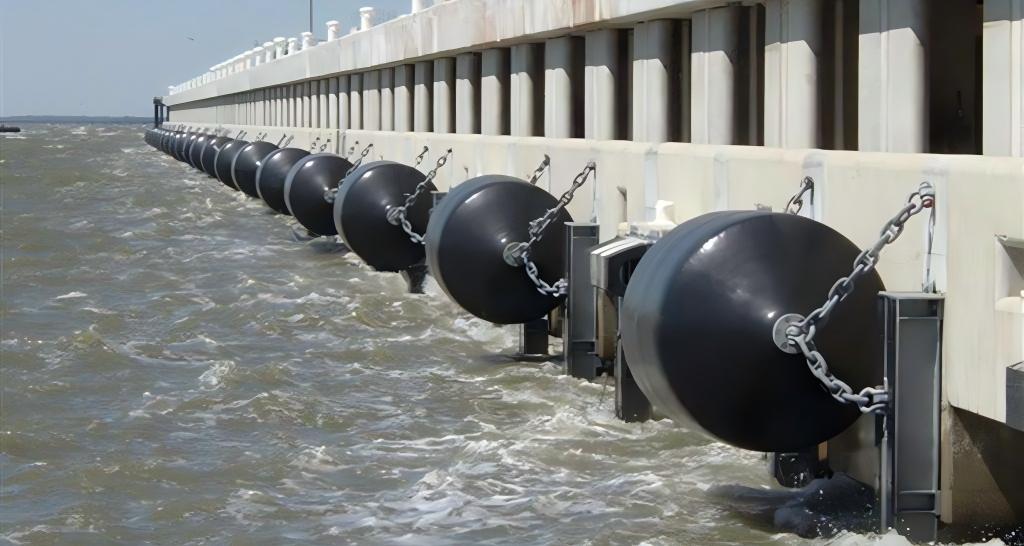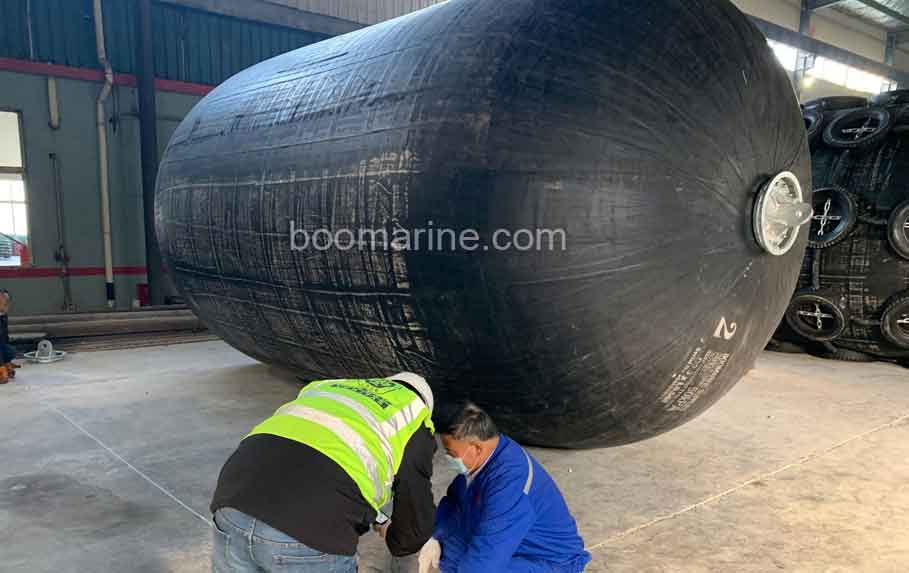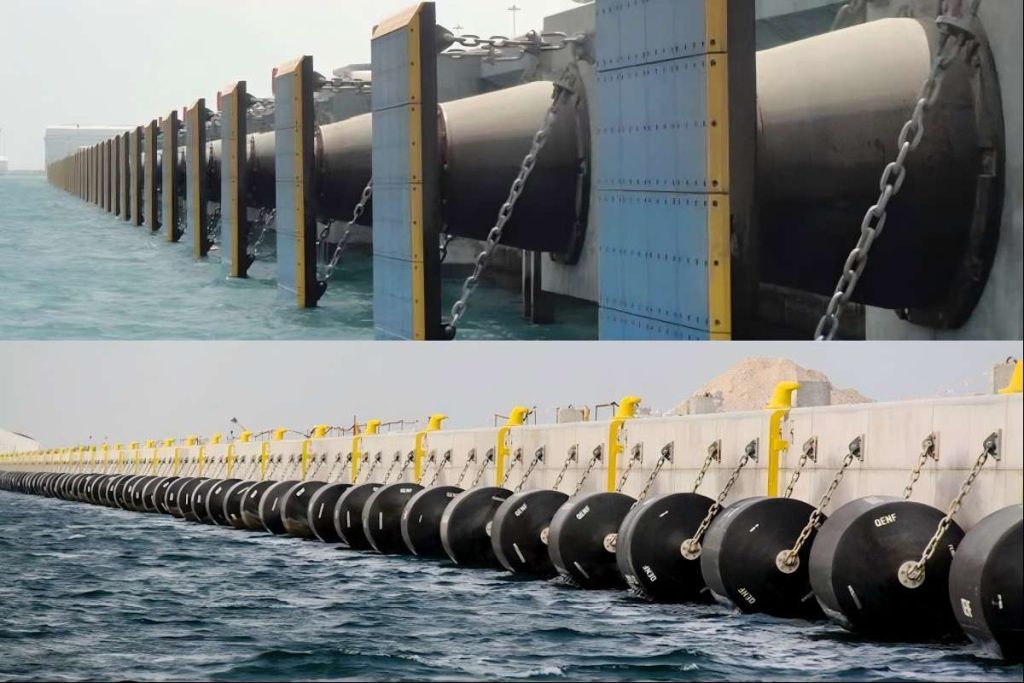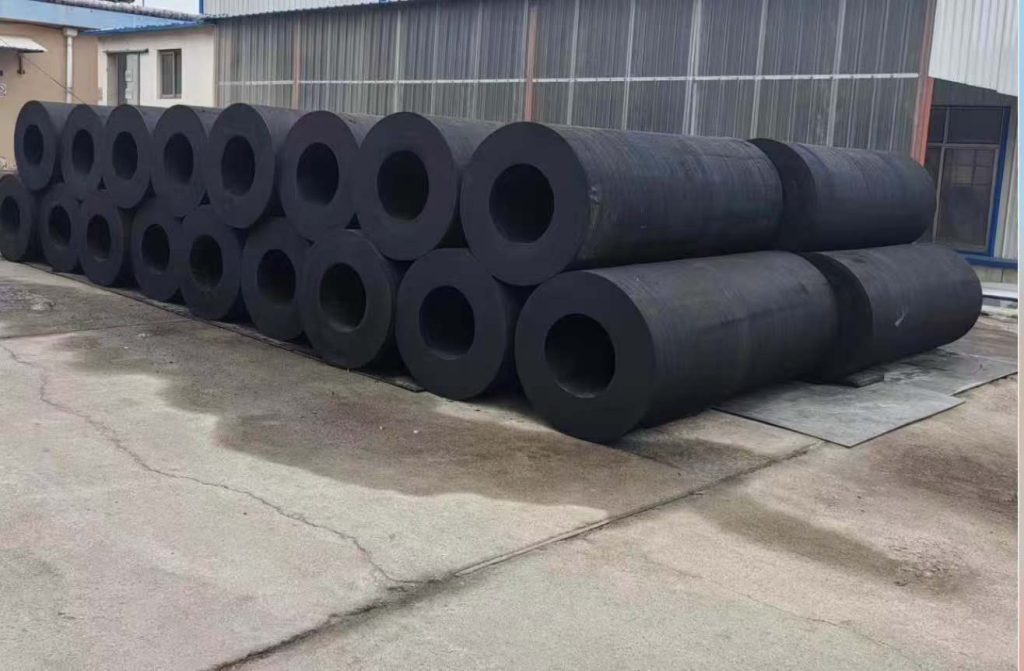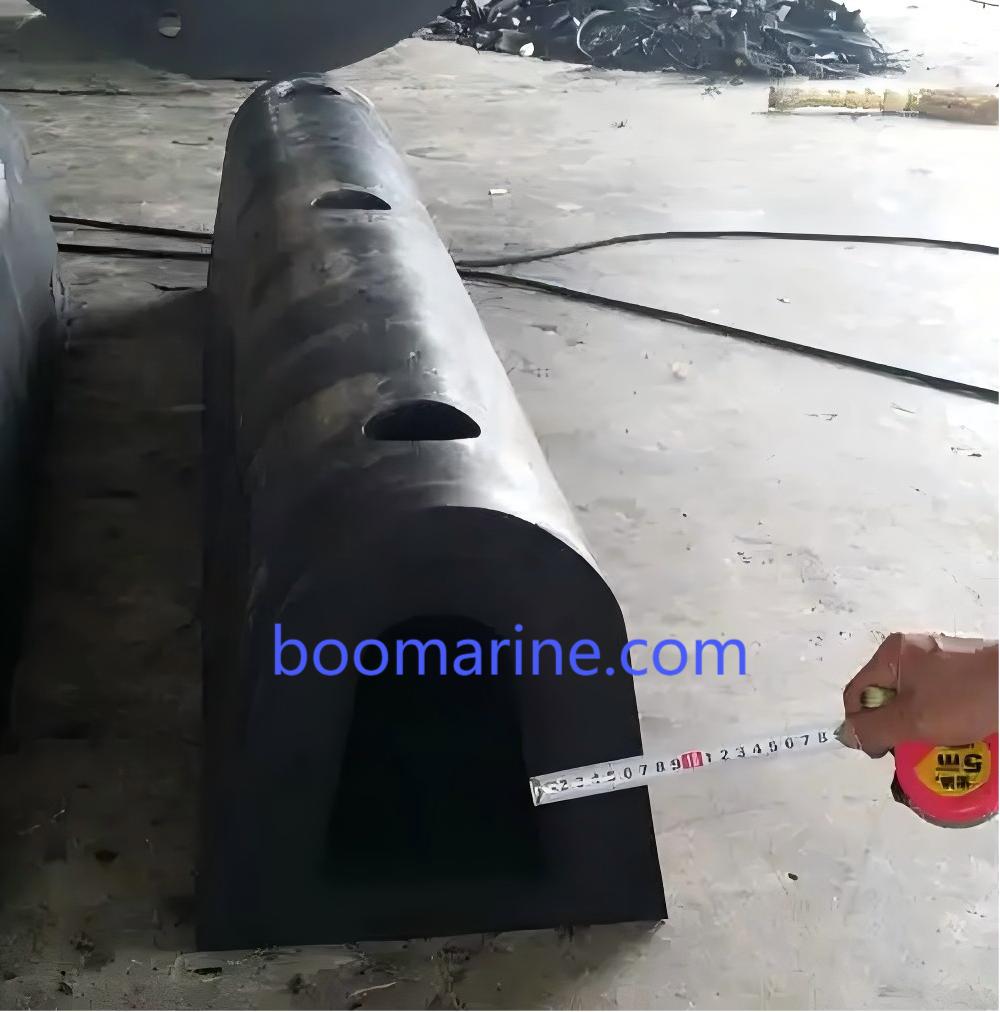Yokohama type pneumatic rubber fender
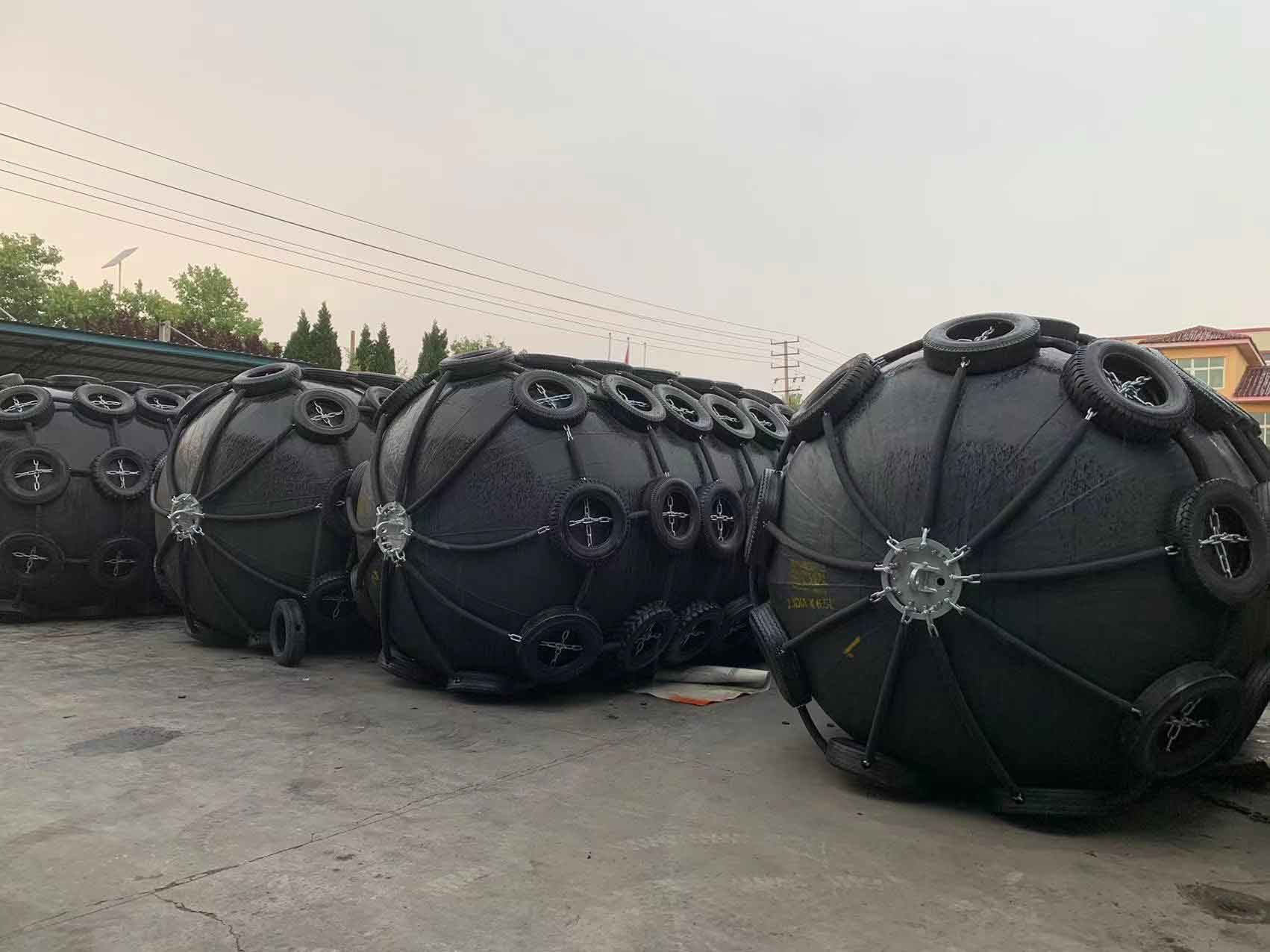
Yokohama type pneumatic fenders are inflatable rubber fenders made of a wear-resistant rubber outer layer and a reinforcement layer. It is then filled with air to absorb collision energy during berthing. If the fender’s rubber is damaged, the fender will deflate and the pneumatic fender will lose its function.
Similar to foam fenders, these rubber floating fenders are relatively light (for their size) and provide good cushioning due to their pneumatic properties.
Foam filled fender
Foam filled fenders consist of an internal steel core, closed-cell foam, a reinforcing cord layer and external elastomeric skin. The foam core is usually surrounded by a soft and abrasion-resistant polyurethane layer and a fabric reinforcement layer that is highly resistant to corrosion. Foam fenders will not outgas and damage their polyurethane coating.
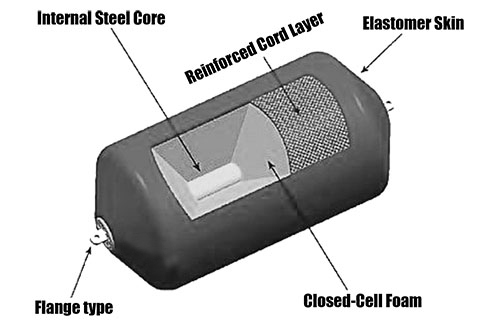
Generally, the “closed cell foam” used in these fenders is usually a material such as EVA (Ethylene Vinyl Acetate) or PE (Polyethylene).
Both materials resist water absorption and are ideal for marine use. In addition, both generally provide efficient energy absorption, and good chemical resistance.
Also, the weight absorption ratio of both materials is quite good, so they are often used as fenders.
The difference between pneumatic fenders and foam filled fenders
Both fenders have their own different characteristics. In order to compare the two, we have summarized the following comparisons:
1. Durability
Durability is difficult to measure without considering deployment conditions (operating conditions) and usage rates.
However, a distinct advantage of foam-filled fenders over pneumatic rubber fenders is that they do not deflate.
When the outer rubber of the Yokohama-type pneumatic fender is punctured, the fender will deflate and the pneumatic fender will lose its function. For foam fenders, they do not leak air, but the energy absorption efficiency after damage is much lower.
2. Performance
There are some differences in performance between Yokohama fenders and foam fenders. As the air in the pneumatic fender can flow freely, the energy intake will gradually keep the distribution when the impact of the fender is at a certain angle with the pneumatic fender.
On the other hand, with foam fenders or fixed rubber fenders, the “load distribution” on the boat wall will not be the same. There are reports that foam-filled fenders absorb 40% more energy than inflatable fenders. However, its actual performance depends on the manufacturer.
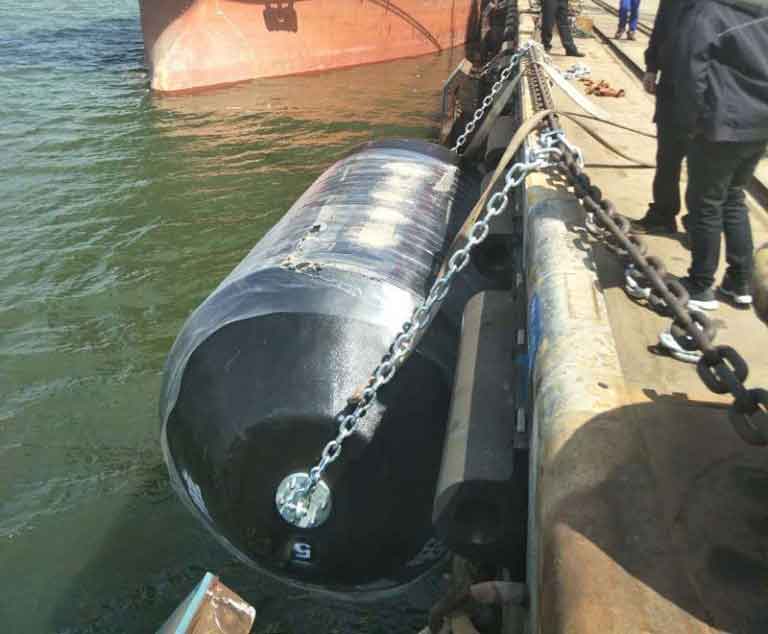
Customers often use foam fenders that tend to deform during operation. Once deformed, the fender is no longer suitable for use. Not only is the energy absorption not efficient, but it may even damage the ship or the port.
3. Price
In terms of price, pneumatic fenders have considerable advantages over foam fenders. Foam filled fenders can cost 3 times more than pneumatic fenders for the same size. This is because the main component of pneumatic fenders is air, which is essentially free.
However, the outer layer containing the air must be strong enough to efficiently absorb and transfer energy into the air in the event of a collision, while pushing the excess energy back as a reaction force.
For foam fenders, on the other hand, it’s an ultra-efficient closed-cell foam core that absorbs energy completely (repels excess energy back as a reaction force). So, for a similarly sized fender, the amount of material used is far more than rubber.
4. Maintenance
Both foam-filled and pneumatic fenders require very little maintenance. However, regular visual inspections are still required.
For pneumatic fenders, just add air periodically (about once a year). Foam filled fenders do not have this concern. Therefore, foam fenders have a slight advantage over pneumatic fenders at this point.
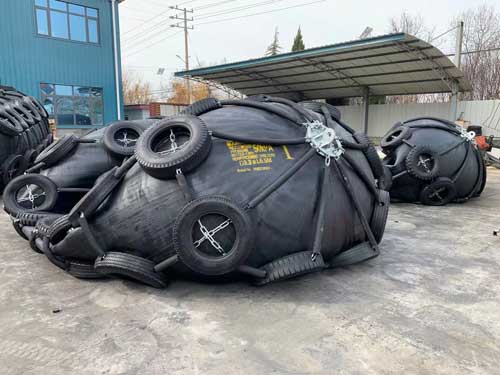
Furthermore, since the Yokohama pneumatic fenders are inflated at work, they can also be (temporarily) transported in a non-inflated state. The advantage is that the fenders take up less space during transport. However, for long-term storage, it is best to (partially) fill the fenders with air to ensure the rubber stays in top condition.
Conclusion

It is important to consider your actual needs, as well as your budget and expectations, when deciding whether to choose a pneumatic or foam-filled fender.
Typically for smaller fenders, such as those less than 2.0m in diameter, foam fenders and pneumatic fenders are similar in cost, but foam fenders offer superior performance.
However, for large size fenders, the cost will play a decisive role. This is the reason why most people consider using pneumatic rubber fenders.

